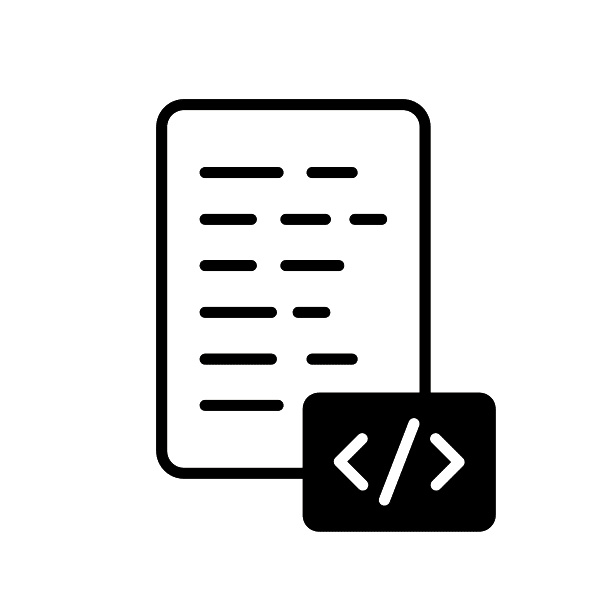Explore extensive datasets and utilize machine learning techniques to unveil valuable insights.

Our teachers and tutors graduated from top universities








Overview

Customized curriculum
We'll find a tutor who can make sure you're prepared for the A-Level Accounting exam with customisable lessons catered to fit your needs.

Flexible
Take lessons only when you need them—as little or as many as necessary until you feel confident.

Private lesson
No need to accommodate other students. Learning is customised your perfect pace and difficulty so you are always improving.
About Data Science and Python
Python’s appeal in data science is rooted in its simplicity, readability, and extensive library ecosystem. Data science, an interdisciplinary field, encompasses statistics, machine learning, data mining, and big data technologies to extract insights from structured and unstructured data.
Expressive and Readable: Python’s easy-to-understand syntax speeds up the AI development process, making the code easier to read and write.
Comprehensive AI Libraries: With libraries like TensorFlow, scikit-learn, and PyTorch, Python simplifies the complexities of AI tasks.
Community Engagement: A vibrant and large community offers a wealth of resources and support, aiding developers of all skill levels.
Adaptability: Python is highly flexible, capable of transitioning smoothly from prototype to production in AI projects.
Interconnectivity: Python excels in interfacing with other languages and platforms, enhancing its suitability for integrating AI into existing systems.
Data Visualization: With libraries such as Matplotlib and Seaborn, Python enables effective data exploration and presentation.
Educational Accessibility: Python’s beginner-friendly attributes create an inclusive learning environment for everyone, from AI novices to seasoned developers.
n the Corporate Arena
Prominent tech giants such as Google, Facebook, and Amazon employ Python for data analytics and machine learning models. Its scalability and user-friendly nature also make it a suitable choice for startups and small businesses.
Mastering Python equips individuals with not only a programming language but also access to a versatile toolbox for navigating the complex world of data. This proficiency holds immense value in today’s data-centric economy.
Description
Embark on an intriguing journey into the realm of data science with this comprehensive Python course. Data science involves exploring and interpreting data to extract valuable insights, often using machine learning to automate model creation and enhance accessibility.
This course equips you not only with the skills to create compelling visualizations but also delves into machine learning, enabling you to automate data processes, uncover patterns, and make informed recommendations.
What you will learn
- Proficient in key SQL concepts
- Familiarity with Python syntax, covering functions, logic, lists, and loops
- Competent in data visualization and statistical analysis
- Well-versed in the fundamentals of machine learning
Requirements
- Ages 13-18
- Interested in a future in tech
- Dedicated beginners in programming
- Interested in advancing STEM skills
Student FAQs About Python and Data Science
Python’s popularity in data science can be attributed to its ease of learning and clean syntax, making it highly accessible, even for individuals with non-programming backgrounds. Its robust library ecosystem, featuring essential tools such as Pandas, NumPy, and Matplotlib, simplifies data manipulation and enhances data visualization capabilities.
Certainly, Python’s adaptability allows for a seamless transition from data cleaning and analysis to machine learning, all within the same framework. Libraries such as Scikit-learn, TensorFlow, and PyTorch enable a wide spectrum of data-related tasks.
Python effectively addresses the management of large datasets through libraries such as Dask and PySpark, specifically designed to handle data distributed across multiple clusters. Dask enables parallel computing, making it suitable for distributed tasks, while PySpark, built on the Apache Spark framework, offers scalability for processing extensive datasets. Additionally, Python’s ecosystem provides tools for seamless integration with big data technologies like Hadoop and Hive, facilitating efficient work with massive datasets and enabling data professionals to extract valuable insights.
Proficiency in Python should encompass essential statistical methods, including descriptive statistics, probability distributions, hypothesis testing, and regression models. Utilizing libraries like Statsmodels and SciPy simplifies the application of these statistical techniques.
To kick off a data science project with Python, you’ll first want to set up your environment. This often involves installing Python packages and libraries crucial for data science, like Pandas, Matplotlib, Seaborn, and Scikit-learn, using package managers like pip or conda. After your environment is set up and you’ve gone through the stages of data collection, cleaning, and EDA, you’ll likely want to communicate your findings. Python makes this easy too, offering libraries like Jupyter for interactive reports and dashboards. This end-to-end ecosystem makes Python an excellent choice for tackling data science projects from start to finish.
Python displays versatility in handling diverse data types, including numerical data, text data, image data, and even unstructured data like social media content. Its adaptability makes it a valuable tool across various data domains.
How it works
1
Request a tutor
Let us know your goals and age range. We'll figure out a plan to help get you there.
2
Match with a tutor
We'll recommend you a tutor based on your needs and goals, or you can request a specific tutor.
3
Start a free trial
Experience a free trial lesson with your new tutor and see if your learning style matches.
4
Keep it up!
If everything went well, sign up to keep going! You can choose the pacing of the lessons
Need more info?
Let's talk.
Leave your phone number, and we’ll call you back to discuss how we can help you.


